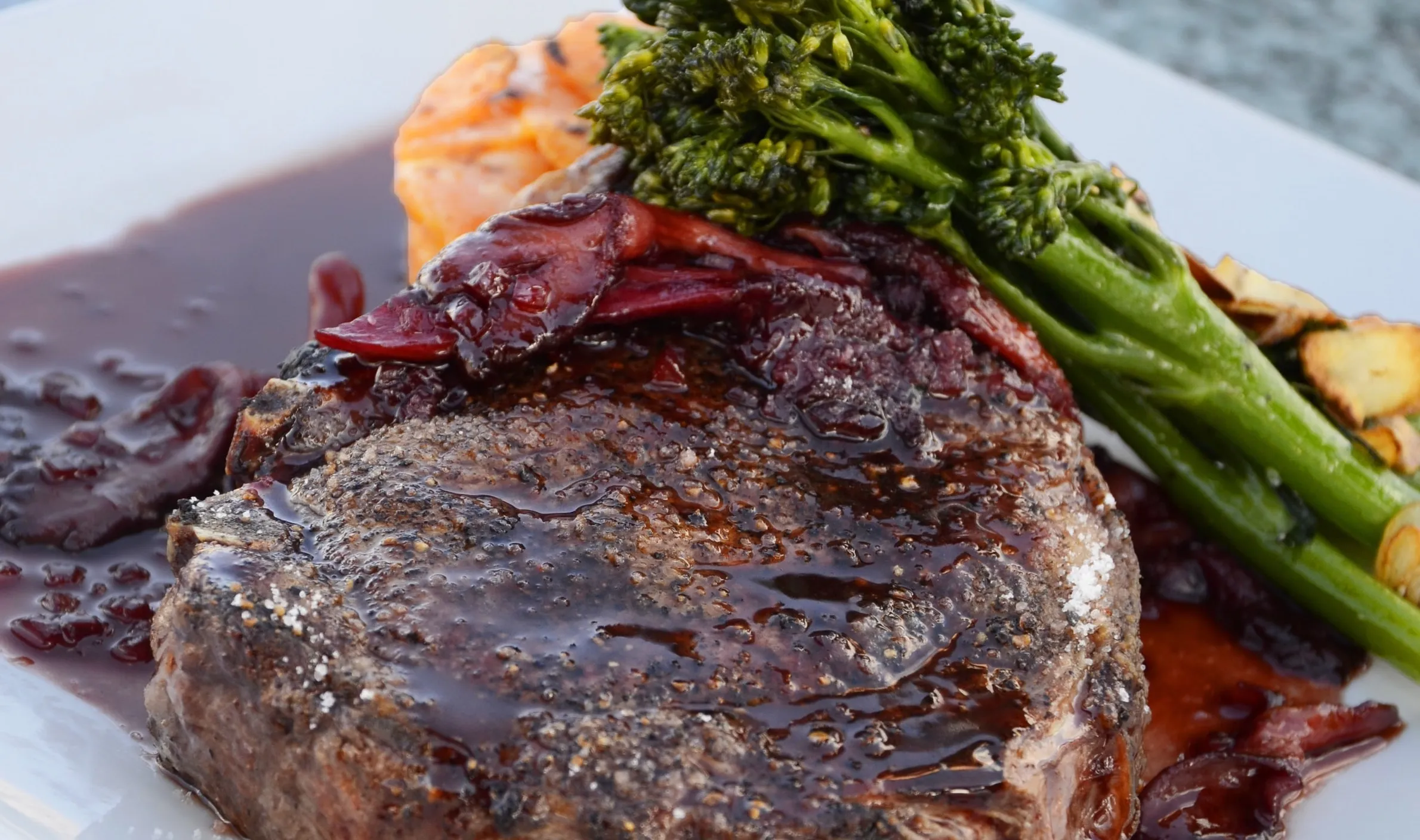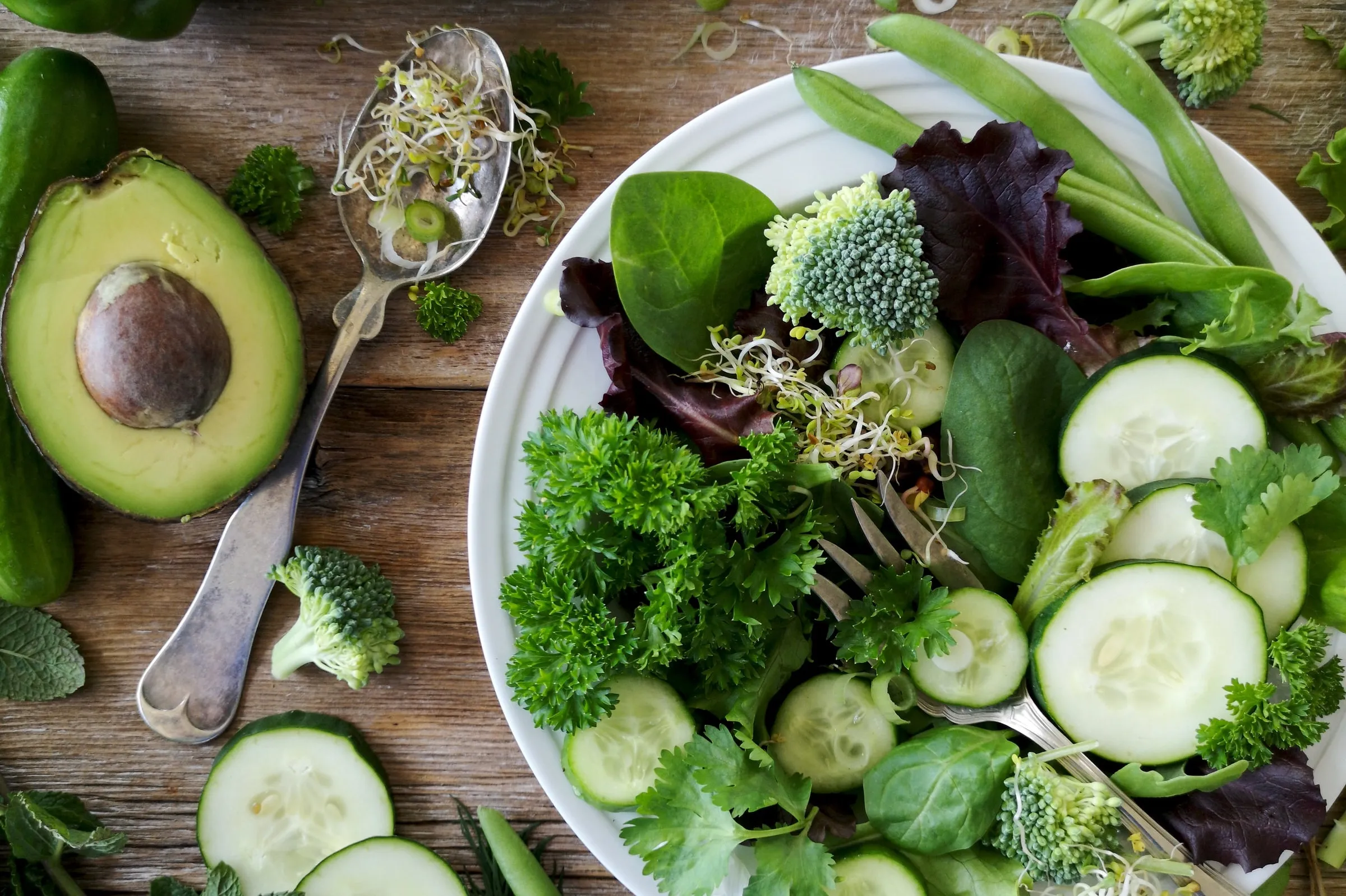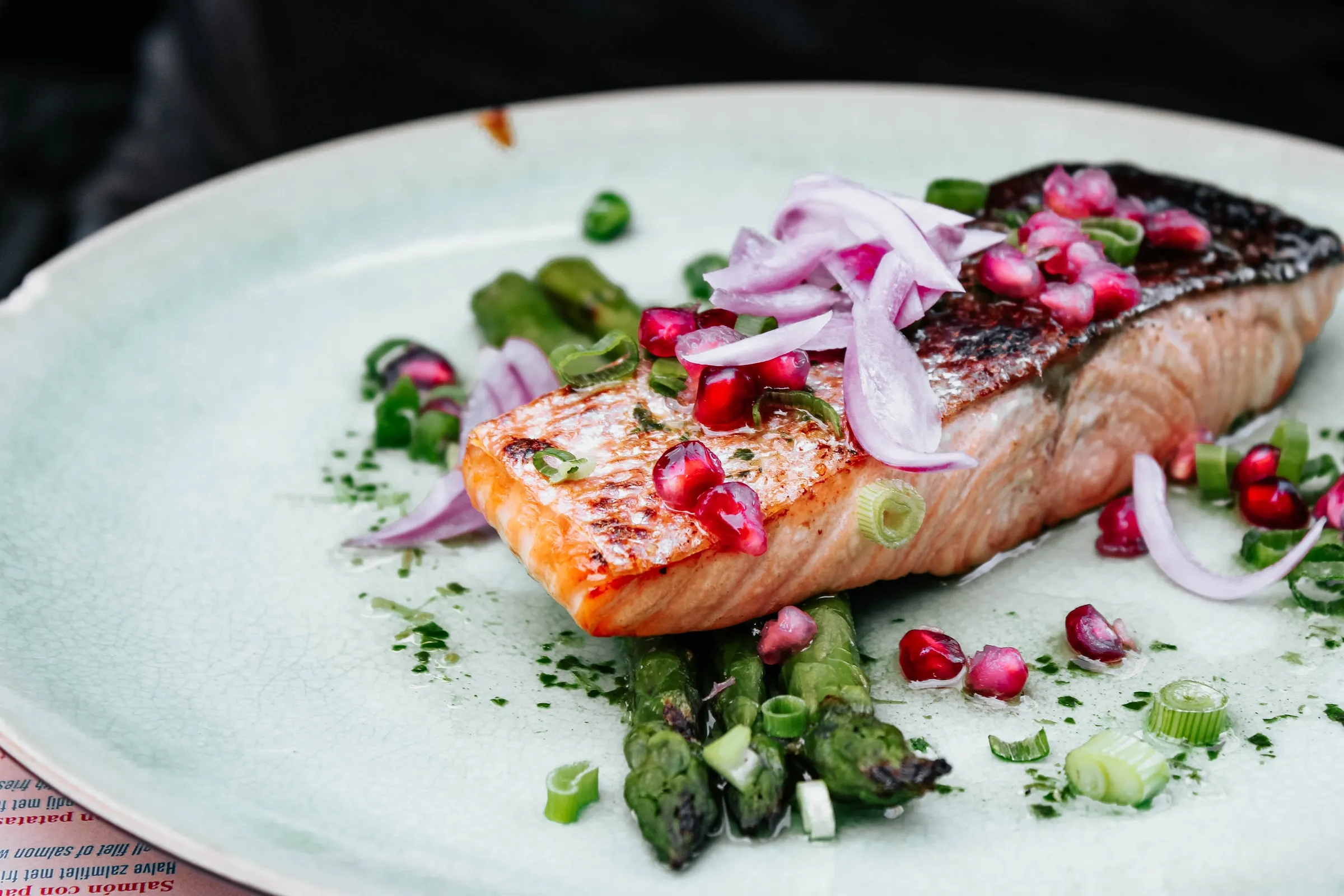A detailed guide to the keto diet for beginners

I am fascinated by nutrition and what effect it can have on your energy, mood, and health. For the past four years, I have been eating low-carb, with six months eating a very strict paleo diet.
I had read about the keto diet and its benefits before. Most of the people I follow for health guidance had implemented a keto diet at some point in their life. But whenever I tried going very low-carb I felt miserable within 1-2 days. Headaches, weakness and fatigue ensued and I convinced myself that my body needs higher carbohydrate intake.
My fiancé and I finally took the plunge one month ago and went full keto. If you are unsure whether the keto diet is for you or struggling with low-carb diet regimes, this guide is for you. I will break down the most important aspects when starting a ketogenic diet and how to troubleshoot.
The basics of the ketogenic diet
In a keto diet you primarily burn fat and so-called ketones instead of carbohydrates. Contrary to popular believe your body does not need carbohydrates to survive. You might have heard of essential fatty acids (which make up fat) or of essential amino acids (which make up the protein). Your body also needs vitamins, minerals and electrolytes. But carbohydrates are all but essential.1
In fact, as hunter-gatherers we were not eating three times a day with added snack breaks like today. Fasting and eating meat, fish and other low-carbohydrate vegetables likely kept us in a keto adapted state most of the time.
When you stop eating carbohydrates your insulin and your blood glucose levels drop. Your body starts burning the fat you eat and the fat on your hips. Not everything in your body can run on fat, most notably the brain. The brain makes up a large part of your energy expenditure and can run on either glucose — or ketones.

Then benefits of the keto diet
Where should I start? The keto diet was only recently revived in research. However, studies indicate a variety of benefits — whether you want to leverage the keto diet for a specific therapeutic application or just to feel great.
I use keto as a tool to increase my general well-being and optimize my health span. Much of the evidence on these markers is anecdotal. Studying Health span in humans requires long-term studies that might never be made. But studies in mice have already shown that the ketogenic diet can improve lifespan, cognitive functioning and memory.2 3 4
Even though research is lagging, you can put those benefits of keto to the test yourself. With some exceptions, a generally healthy person can eat keto and experience benefits within 1-2 months.
Fortunately, therapeutic uses of the ketogenic diet have already solid research to back them up. The ketogenic diet has been used successfully to treat or manage various diseases — among them multiple sclerosis5, Alzheimer6, cancer7, diabetes, metabolic syndrome and cardiovascular disease. Read more about why keto could become a revolutionary cancer treatment in my previous blog post. Now more relevant than ever, a study showed that the ketogenic diet protected mice against the influenza virus.8 Studies for other viruses such as Corona have not been made yet. However, it is plausible that the keto diet would have similar protective properties against viruses in general.
If you want to use keto as a therapeutic tool, you should work together with your doctor. If your doctor dismisses the ketogenic diet and other nutritional protocols without a good reason, consider switching. Unfortunately, physicians have not been trained well in nutrition sciences. They prematurely dismiss nutritional protocols like the ketogenic diet as dangerous because of a lack of understanding.
How to get started on the ketogenic diet
To set yourself up for success there are a few preparations you can take. Depending on how you are eating right now, a ketogenic diet does not need to be a dramatic diet shift for you, but rather an adjustment with lower carb intake and higher food quality.
Clean out your fridge, freezer and cupboard
Don’t rely on your willpower. You will need it otherwise. By cleaning out carbs from your house you can’t eat them. It’s that easy. Most of us won’t go all the way to the store to get that chocolate cookie, but if it’s only a few steps away we gladly devour it. Get rid of all foods that are not on the list linked below or where you are sure that they don’t contain many carbohydrates.
If you are living with a spouse or family that doesn’t want to join you, at least separate all carbohydrate bombs from the rest of your food.
Eat a clean keto diet
To experience all the benefits of keto, you eat high-quality and unprocessed foods. You will find people online that proudly show off how they lost weight on a keto diet while eating only bacon. You can lose weight that way and maybe losing weight is your main reason for starting keto. But don’t forget that eating foods that are low in nutrition or inflammatory for your body will make things worse eventually.
There are several books that summarize what foods are good for your body, but I will share with you the most important aspects to watch out for:
- Skip industrially processed vegetable oils, such as soybean, canola, corn, sunflower, cottonseed and safflower oils. Whether these oils are healthy or not is still a scientific debate and there is no clear evidence that they are unhealthy.
However, there are two reasons I think you should avoid them. One is that they are a Frankenstein food that did not exist 100 years ago. We simply cannot know what the long-term effects of consuming most of our fat from these oils are.
Second, we know that the ratio between Omega 6 fatty acids (found mostly in vegetable oils) to Omega 3 fatty acids (found in fish and grass-fed meat) has during most of human history been around 1:1. By consuming excessive amounts of vegetable oils we skew the ratio dramatically with potentially bad side effects.9 Stick to the recommended fat sources you find later in this article.

- Eat lots of vegetables. Even though low-carb vegetables will not add many calories to your diet, they contain vital micronutrients and fiber. You can eat keto without vegetables (the carnivore folks do it) but this version of keto is not well studied and the benefits over including vegetables are not clear.
- Eat the highest quality meat and fish you can afford. Especially for meat, quality makes a difference in the fatty acid composition.10 If possible, try to only eat grass-fed and organic red meat. Find out where your meat and fish are coming from and how they are treated. You will have a better conscious and your body will thank you.
- Skip most products that have more than one ingredient on their label. Even if they are marked as keto friendly. Stick to whole foods and avoid products that contain ingredients you don’t recognize.
Plan for social situations
The most likely reason you will fail on keto is because of social reasons. Most people you know will not eat keto, and they will tempt you to come back to the carb side of life. It’s not that they mean bad for you. It’s just in our human nature that when somebody sticks out of the norm you are trying to wheel them back in.
When you are going out to lunch or dinner with friends try to pick a restaurant that has keto friendly options. Salads are often a great option, but many other meals can be a great fit too if you can substitute the carbs for a vegetable side dish.
Don’t try to convince others to eat keto or even mention that you are doing a diet. The best explanation is a simple like I feel better when I don’t eat carbs. It’s hard to argue with your feelings and most people will let it go.
What foods should you eat on a keto diet?
After the last chapter, you are probably wondering: so what can I actually eat on keto? It turns out… a lot! You can get creative with many combinations of proteins, such as meat and fish, vegetables and sauces made from healthy oils.
 A typical keto meal could be grilled salmon with blue cheese spinach purée. You can often think of dishes you would normally make while skipping the carb part. This is often the least tasting one anyhow. Ok, you cannot replace a pizza with this approach, but most meals become even better by skipping the carbs.
A typical keto meal could be grilled salmon with blue cheese spinach purée. You can often think of dishes you would normally make while skipping the carb part. This is often the least tasting one anyhow. Ok, you cannot replace a pizza with this approach, but most meals become even better by skipping the carbs.
You can find a great list of recommended foods here. When you go shopping just pack plenty of protein, vegetables and fats from that list. Come up with creative ways on how to mix and match with those three parts. Combining different tastes keeps the diet interesting and you on track.
How do you fix the keto flu?
You might have read of the keto flu online. Many report flu-like symptoms of fatigue, weakness and increased thirst. Most of the symptoms of the keto flu are actually dehydration symptoms. The glucose on your body binds a lot of water. When you deplete those glucose stores your body releases a lot of water and electrolytes. If you don’t replenish both you will get dehydration problems.
Fortunately, the cure is inexpensive and simple. Start by drinking plenty of water. It will probably be much more than you are used to. Always have a bottle ready you can sip on.
The main electrolytes you need to replenish are sodium, magnesium and potassium. You can buy them premixed as pills or powders. This option is fine as long as you make sure that there is no sugar added. Gatorade is not your friend! A great option is LMNT Recharge, a product by Robb Wolf, that has a great ratio and contains no added sugars.
I bought each electrolyte separately and experimented based on the LMNT Recharge ratio. It’s a cheap option and more flexible. Just make sure to buy Magnesium Citrate as it’s better tolerated by your digestive tract. More on that in a second.
But you can also get problems from consuming too many electrolytes. I started drinking my electrolyte cocktail three times a day together with a diet rich in whole foods like vegetables, meat and fish.
After a couple of days I was experiencing irregular heartbeats that freaked me out. When I stopped the electrolyte supplementation, my heartbeat became regular again. Eventually, I settled on a smaller amount. My theory is that I had a too high consumption of potassium overall — and tracking my electrolyte intake would have helped uncover that.
Whichever product you pick for your electrolyte cocktail, drink it slowly! Potassium can be dangerous in large doses taken at once. Your body will make sure to get rid of excess magnesium — but it won’t be pretty! If you would like to avoid spending most of your day on a toilet seat, consider sipping your cocktail throughout the day.
Metrics to track on a keto diet
I am a fan of tracking biomarkers. An Apple Watch and an Oura Ring help me track my activity, sleep and stress levels. I also track my fasting glucose and ketone levels with the Keto Mojo Device. Many people will tell you that the most important metric is to listen to your body and see how you feel. While that is true, there is a simple reason I track quantifiable health metrics — it works.
When you make any exercise or diet change, improvements will not be obvious at first. In fact, it can get worse before you see any progress at all. Any small win that you can find should be celebrated. Ketone levels are not the most important metric in a keto diet, but they are a good approximation of how well you are doing. You can see after a couple of days that your ketone levels increase and your glucose levels go down.
To keep your measurements comparable you need to have the same conditions. Take the blood test in the morning after waking up before consuming any calories. After having read about ketone measurement through breath and urine, blood is still the way to go. After the first week of pricking your finger you will do it like second nature.
Tracking your macro- and micronutrient intake is a good idea in most cases. I don’t. The simple reason is that, while there are good apps to track nutrition available now, I find it annoying to do. Measuring every ingredient takes away the joy of cooking and eating for me. The easiest things to track are usually the products with a barcode to scan on it. But the healthiest options are often the ones that don’t have one - think fresh vegetables or farmer’s meat. But tracking nutrition can be an extremely helpful tool to see whether you are actually eating according to the keto macro ratios. You can also troubleshoot deficiencies like electrolyte imbalances much quicker.
What happens when you cheat on keto?
One of the big questions I had when starting keto was what happens when you cheat. I had been having dehydration issues and headaches after cheating on low-carb and was not keen on experiencing that every time I ate some.
The good news is that the longer you stay keto the faster you bounce back from cheating on carbs. You can get back into ketosis quite fast, especially with fasting. However, you should not make cheating a habit.
People are cycling carbs on a keto diet. But unless you are an elite athlete you are probably better off staying keto for the long run. There can be some performance benefits to eating carbs when you compete but for the average athlete those are negligible.
Where to go from here
I tried to give you a quick foundation for your own keto adventure. There is a lot more content to read, but my advice is to get started now. It’s easier than you think and once you have experienced the benefits of keto for a couple of weeks, you won’t want to go back.